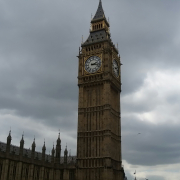Supply Chain Finance Fraud Isn’t New, Neither is Dodgy Accounting
(But a Government procurement leader joining a supplier while still working as a civil servant is!)
In my last article about fraud related to supply chain finance (which came to mind because of the emerging Greensill / Gupta developments), I said that I hadn’t come across that type of fraud previously. There are plenty of other variants on invoice-related fraud in my book, however.
That brought a call from a friend. He told me of a case he had seen where a business created fake invoices to “clients” and used those invoices to obtain funding from their supply chain finance (SCF) provider. The amusing angle was that the finance provider was a major bank, and the fake invoices included a number that were supposedly issued to the same bank!
So the finance was provided by a bank on the basis of non-existent delivery of goods or services to the same bank … you might have thought that someone would have spotted this or checked to see if the supposed supplier was in their AP system. But perhaps they did, given the fraud was discovered eventually! You also wonder whether the fraudster was stupid, secretly wanted to be caught or was just having a laugh at the expense of the bank itself.
Exploring this theme further, it is clear that supply chain finance related fraud is not new. Just last year, a major scandal in Singapore saw the Him Leong oil trading company collapse. Part of that was down to false invoicing and over stating of receivables, which enabled the firm to obtain financing based on these invoices.
As the spglobal website reported, “financial statements for the year ended 31 October 2019 grossly overstated the value of assets by “an astonishing amount of at least $3 billion” comprising $2.23 billion in accounts receivables which had no prospect of recovery and $0.8 billion in inventory shortfalls”.
There are also cases that are not overtly “fraudulent” but are misleading. When leading UK construction and facilities management firm Carillion collapsed in 2017, the use of supply chain finance was one of the ways it concealed its problems until the final reckoning. Carillion worked with Santander bank to offer its suppliers payment earlier than its ridiculous 120-day standard payment terms (in return for a fee, of course). Santander then retained the money it owed for the full period.
Globalconstructionnews website reported that “Carillion tucked the cash managed through reverse factoring into the box labelled “trade and other payables”, to which it had added “other creditors”. This, believes S&P, allowed it to show a modest increase in working capital from 2012 to 2016, because “working capital” does not usually include trade payables. After 2012, the growth in money owed under trade payables ballooned from £263m that year to £761m in 2016. Reverse factoring, said S&P, allowed Carillion to “hide a substantial part of its debt from view”.
To widen the discussion to fraud generally, I believe that Boards, CFOs and CPOs should regularly ask themselves, “how would I defraud this organisation if I was an evil criminal genius”? Or maybe employ an actual evil criminal genius consultant to do that for them (I’m available at very reasonable evil genius rates). Read most of the cases I quote in the Bad Buying book, and you realise that any intelligent insider could have spotted the flaw in process that allowed the fraud, if only they had spent some time thinking about that.
However, the problem with much SCF related fraud or dubious practice is that it is almost always an internally generated fraud. It might involve third parties, innocent or not so innocent, but it is often driven by very senior people in the business, or even owners and founders. So there would not have been much point asking the Board of Carillion to look at the use of SCF if they were complicit in the bad practice. If it is found that the Gupta companies did issue fake invoices to generate SCF funding from Greensill, then no doubt that will have originated at a pretty high level in the business.
Meanwhile, back to other aspects of the Greensill affair, and yesterday we saw newspaper revelations that Bill Crothers actually joined Greensill two or three months before he left the civil service, while he was still Chief Commercial Officer for the UK government. Such a move seems very odd but it was all signed off within the Cabinet Office, apparently. That seems to show very poor judgement at best from Crothers, and perhaps the judgment of the experienced top-level civil servants who approved this was even more suspect. More to come on all this, I’m sure.









Leave a Reply
Want to join the discussion?Feel free to contribute!